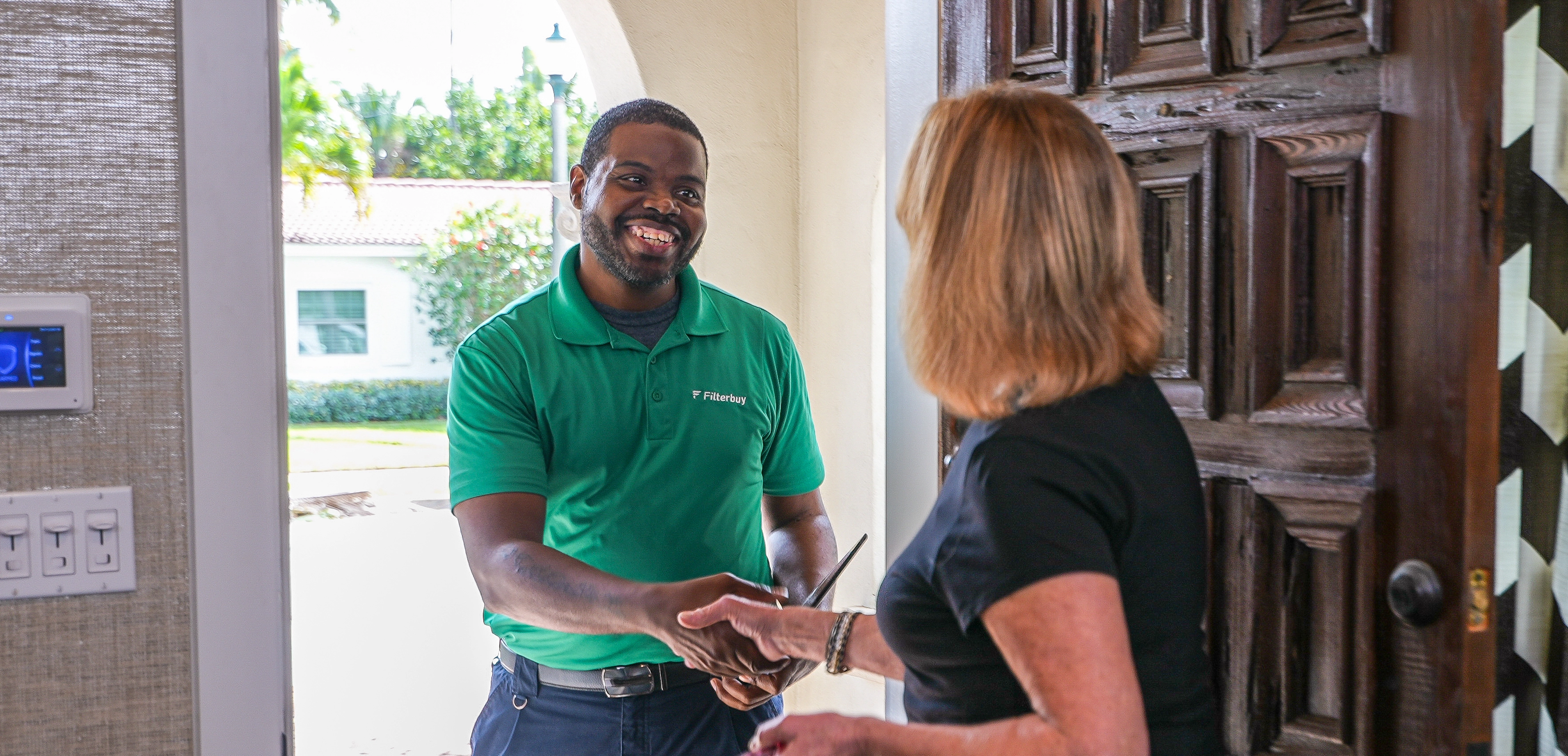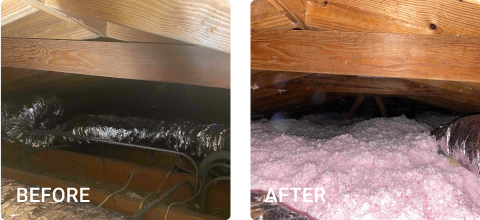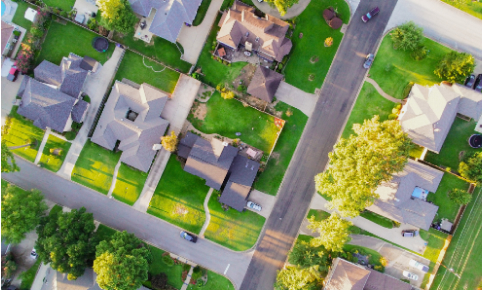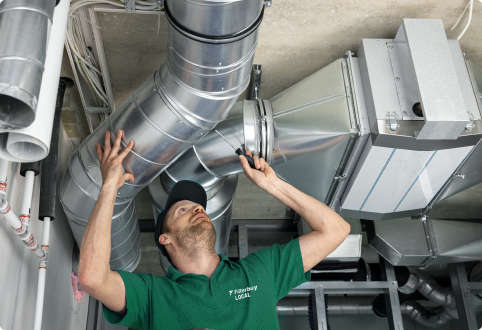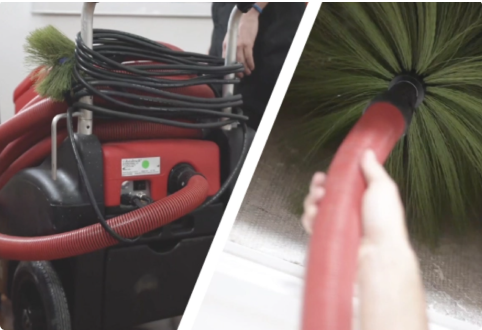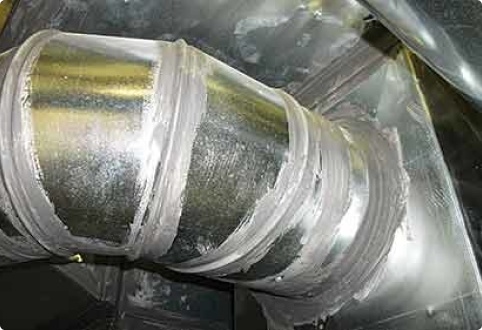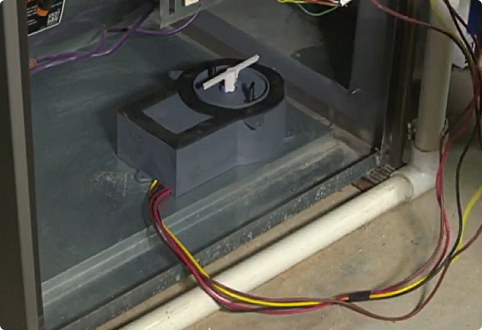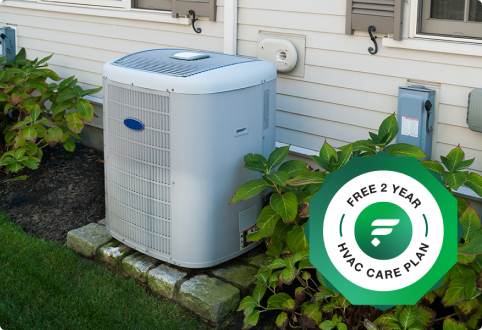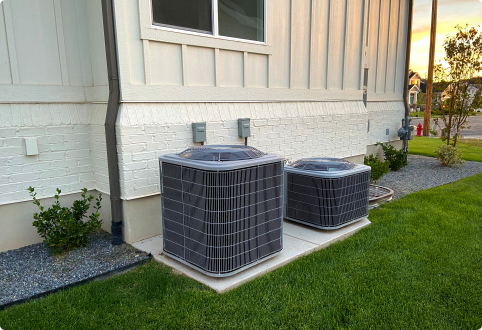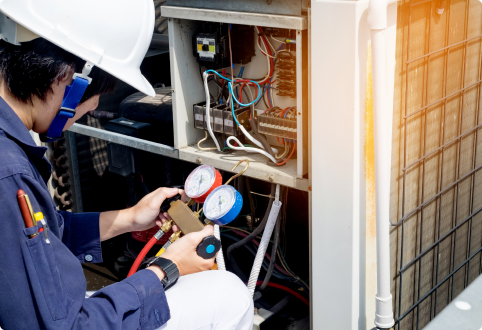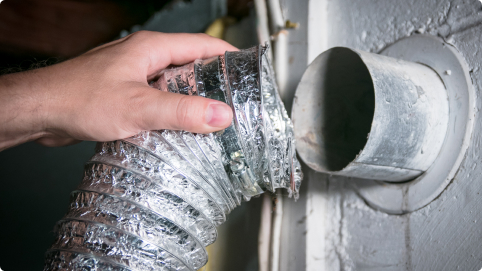Welcome to Filterbuy Local, the best attic insulation installation service company proudly serving in and near the greater Zephyrhills, FL area. Please let us know how we can help solve your Zephyrhills attic insulation installation needs with professional, affordable and fast residential and commercial HVAC services by getting a free online quote or by giving our friendly HVAC specialists a call. We look forward to hearing from you!
Attic Insulation Installation Services Zephyrhills Fl
Attic insulation installation services are a key component in maintaining an energy efficient and comfortable living environment. Zephyrhills, Florida is home to many experts who specialize in providing high quality attic insulation services. This article provides an overview of the importance of attic insulation for homes located in the Zephyrhills area as well as why it is important to use professional services when installing or upgrading existing insulation. Additionally, tips on how homeowners can find reliable and experienced professionals in the area are provided.
In areas with extreme weather conditions such as Zephyrhills, FL, proper attic insulation can make a significant difference in terms of lowering energy bills while still keeping indoor temperatures comfortable throughout the year. It also helps protect against moisture buildup which can lead to other problems such as mold growth if not addressed quickly enough. The right type and amount of attic insulation will depend on climate conditions, age of the house and size of the space needing to be insulated among other factors.
It is highly recommended that homeowners seek out qualified professionals when considering installing or replacing their existing attic insulation due to its complexity and potential safety hazards involved with handling certain types of materials. Additionally, professional installers have access to better quality products than what may be available at local retail stores making them ideal for this job. In conclusion, this article outlines why attic insulation should be installed or replaced by professionals in order for homeowners located in Zephyrhills, FL to enjoy greater comfort levels along with lower energy costs over time.
Benefits Of Installing Attic Insulation
Installing attic insulation is a great way to reduce utility bills and make the home more energy efficient. It can be used as an extra layer of protection against extreme temperatures, both hot and cold. By keeping air from escaping through gaps in the attic floor or walls, it helps maintain a consistent temperature inside the house, resulting in lower heating costs. Additionally, installing insulation will help protect the structure of your roof by reducing moisture damage caused by condensation that forms on colder surfaces during winter months.
Furthermore, properly installed insulation acts as an acoustic barrier, blocking out excess noise from outside sources such as traffic and neighbors. This allows occupants of the home to have better quality sleep at night and enjoy quieter living spaces throughout the day. Lastly, having adequate attic insulation can also prevent pests from entering your home since they are unable to travel through thick layers of material.
The next section looks at different types of attic insulation available for installation services in Zephyrhills FL.
Types Of Attic Insulation
Attic insulation is an essential part of a home's heating and cooling system, often acting as the first line of defense against extreme temperatures. There are various types available for installation to suit every household’s specific needs. Understanding these different options can help determine which type best fits one’s situation:
* Blown-in cellulose: A popular choice among homeowners due to its affordability, this type consists of recycled paper that has been treated with fire retardant materials. It offers superior soundproofing capabilities and is highly effective at preventing air leakage.
* Batts or rolls: These pre-cut sections of fiberglass come in several thicknesses and widths and generally require minimal cutting during installation. This option also provides excellent thermal protection while being more affordable than other alternatives.
* Spray foam: The most expensive type of attic insulation on the market, spray foam forms a seal around all crevices and gaps, providing superior air sealing performance along with exceptional thermal resistance ability.
No matter what kind of insulation one chooses, proper installation is key to ensure maximum efficiency for long lasting results. With so many considerations when it comes to choosing the right material for your home, make sure you research each option thoroughly before making a final decision.
Choosing The Right Insulation For Your Home
When selecting insulation for your home, there are multiple factors to consider. The type of climate you live in and the size of your house will determine what kind of insulation is best suited for your needs. Additionally, the cost associated with different types of insulation should be taken into account. Generally speaking, fiberglass and cellulose are among the most common choices while spray foam may provide more efficient protection from heat transfer.
The R-value measures an insulating material’s ability to resist heat flow through it; this rating system allows homeowners to compare materials and select appropriate options based on their budget and climate zone. Fiberglass has a higher R-value than cellulose, meaning that it provides better insulation but also costs more money upfront. Spray foam can reach 2 or 3 times the level of R-Value offered by other materials due to its high density, making it a great option for colder climates where air infiltration could occur quickly without proper insulation.
Finally, when deciding which type of insulation is right for your home, you should consult a professional who can assess your specific needs and advise you on the ideal solution. Professional installation services ensure that all gaps are properly sealed off so that no energy escapes from inside your house and helps maintain comfortable temperatures year round.
Professional Installation Services In Zephyrhills Fl
Installing insulation in an attic can be a daunting task for many homeowners. Professional installation services ensure that the job is done correctly and efficiently, preventing energy loss and providing long-term savings. This section will discuss professional installation services available in Zephyrhills FL, including their benefits and associated costs.
Professional installers have access to quality materials not found at home improvement stores, ensuring that the insulation installed meets local building codes as well as its intended purpose of reducing energy use in your home. Additionally, they know how to properly fit insulation into existing walls or attics without damaging other components such as electrical wiring or plumbing. Properly trained technicians are also able to complete the project more quickly than if you attempted it yourself, saving time and money with fewer callbacks due to incorrect installations.
Professionally installed attic insulation offers numerous advantages over DIY projects, though there may be additional costs involved beyond just buying supplies. These include labor fees charged by contractors based on square footage covered, disposal fees for removal of old material before new installation begins and rental charges for specialized equipment needed for certain jobs. Careful consideration should be given when evaluating these expenses against potential savings from increased energy efficiency in order to make an informed decision about whether professional installation is right for you.
Cost Considerations For Attic Insulation Installation
The cost of installing attic insulation is like a roller coaster, with different factors impacting the total price. The type of insulation chosen, along with its R-value and desired coverage area will affect the installation costs. Additionally, the labor cost associated with the installers, their experience level and whether other services are included (such as sealing air leaks) could all influence how much money must be spent in order to properly insulate an attic space. Homeowners should research various companies’ quotes before making a decision on which contractor they would like to use for this project.
When choosing an insulation material there are several options available; each having its own set of pros and cons when it comes to cost efficiency. For example, fiberglass batting is one of the more affordable types but has lower thermal resistance than others such as cellulose or spray foam. On the other hand, those materials usually require professional installation and may involve additional fees that must be factored into budgeting for these projects. Furthermore, R-values can range from 3 - 5 per inch depending on what type is used so it is important to consider just how effective you want your new insulation layer to be before selecting a product.
As far as labor goes, experienced contractors tend to charge higher rates due to their expertise in handling specific jobs safely and efficiently. However, if any extra work needs done such as patching air leaks then it might make sense to opt for someone who offers those services at no additional fee since this can help save money in the long run by preventing energy loss within a home's structure. Transitioning now into preparation steps prior to installation..
Preparation Steps Before Installation
Before attic insulation installation services in Zephyrhills, Florida can begin, a few steps should be taken to ensure the process is done safely and efficiently. These are:
* Inspecting existing insulation for any damage
* Ensuring proper ventilation of the space
* Checking that all materials needed for installation are available
It is important to inspect existing insulation for any issues such as mold or moisture build-up. Additionally, if additional ventilation needs to be installed this should occur before new insulation goes in. To guarantee an efficient installation process, it is essential to check that all necessary tools and materials will be on hand when beginning the job. This includes measuring tape, insulation batts, vapor barrier material, knee pads and protective eyewear.
By taking each of these preparation steps into account prior to starting attic insulation installation services in Zephyrhills, FL., homeowners can rest assured knowing their project will go smoothly. In order to finish up properly and safely, it is imperative to follow certain safety guidelines during installation.
Safety Guidelines To Follow During Installation
When it comes to attic insulation installation, safety should always be a priority. It is important for homeowners and professionals alike to follow the necessary precautions when installing and removing the materials. To ensure a safe working environment, all workers involved in the process should be aware of certain guidelines that must be followed during installation.
First, protective equipment such as gloves, goggles, face shields, and dust masks should be worn while handling insulation material or tools. This will help reduce contact with potentially harmful irritants associated with fiberglass insulation particles. Second, caution must be taken to avoid any contact with electrical wiring or outlets located in attics before beginning work. All necessary precautionary measures should also be taken when using ladders or other equipment around the home’s roof line.
Additionally, proper ventilation is essential to minimize exposure to airborne particulates created by cutting and drilling into existing surfaces onsite. As such, fans should be set up at each end of the workspace to direct air away from all individuals present during installation activities. By taking these safety steps seriously throughout the duration of an attic insulation project there can be peace of mind that everyone remains safe from potential hazards encountered along the way. Transitioning next into post-installation maintenance tips is equally important in order to keep both occupants and property protected against threats posed by poor insulation performance over time.
Post-Installation Maintenance Tips
Once attic insulation installation is complete, it is important to properly maintain the insulation. Proper maintenance will ensure that your attic insulation continues to perform as expected and provides optimal energy efficiency in your home. Here are some tips for proper post-installation maintenance of attic insulation:
* Regularly check for pests such as rodents or insects which can damage the insulation material. If a pest infestation is detected, take appropriate action immediately to remove them from the premises.
* Inspect the vents and ducts regularly to make sure they remain clear of any debris or dust buildup which may impede airflow and reduce the effectiveness of the insulation.
* Inspect all exposed surfaces around pipes or other areas where air leaks may occur; seal these up with caulk if needed.
* Ensure that any surrounding materials such as drywall are securely sealed against moisture intrusion, which can cause mold growth within the walls and ceilings of an insulated space.
It is also important to be aware of warning signs that indicate poorly installed insulation, such as cold spots on interior walls, increased energy bills due to inefficient heating and cooling systems, unusual noises coming from attics and walls, visible drafts near windows or doors, and higher than normal humidity levels inside homes during certain times of year. Knowing what to look out for can help you identify potential issues before they become more serious problems requiring costly repairs or replacements.
Warning Signs Of Poorly Installed Insulation
It is important to recognize the warning signs of poorly installed insulation. If not properly addressed, these issues could lead to a loss in energy efficiency and an increase in monthly utility costs. The following are potential indications of improperly installed attic insulation:
First, if your home feels drafty or you notice cold spots throughout the winter months, this may be a sign that there are gaps between insulated panels or uneven coverage from insufficiently laid flooring. Additionally, if airflow through vents and other openings is noticeably higher than normal, this could indicate poor installation techniques have been used. Finally, if condensation occurs around air ducts or window sills during cooler weather, it might mean that inadequate amounts of insulation have been applied directly above them.
Properly installed attic insulation will help maintain the desired indoor temperature year-round while keeping energy bills low. By recognizing any warning signs associated with improper installation and contacting a professional installer as soon as possible, homeowners can ensure their investment will last for years to come. As such, transitioning into the subsequent section about frequently asked questions regarding attic insulation installation services becomes vital in order to gain further insight into how best to protect one's home from heat transfer losses and keep heating/cooling costs down.
Frequently Asked Questions About Attic Insulation Installation Services
Attic insulation installation services in Zephyrhills, FL can be a great way to increase the efficiency and comfort of your home. However, some homeowners may have questions about these services before making their decision. To help answer those questions, here are some frequently asked ones that might arise:
- How often should attic insulation be replaced?
- What types of materials are used for insulation?
- Does proper ventilation play an essential role in attic insulation installation?
- Is there any potential risk from hazardous substances during installation?
- Are there any special considerations when installing insulation in older homes?
When considering how often attic insulation needs replacing, it depends on the type and condition of the material being used. Generally speaking, most products last between 10 to 15 years, but age is not the only factor at play. If the material has been exposed to water or pests over time, then this could impact its performance and lifespan. Additionally, if you’ve noticed increased energy bills or decreased cooling/heating performance inside your home, it may be time for a new layer of insulation.
The two most common materials used for insulating attics are fiberglass and cellulose. Fiberglass tends to be cheaper while providing higher levels of R-value per inch than cellulose does; however, fiberglass doesn't provide as much soundproofing ability as cellulose does. It's important to select the best product for your specific needs so that it meets local building codes and provides optimal results according to your budget.
Proper ventilation also plays an integral role in attic insulation installation since air flow assists with temperature control throughout your house by reducing moisture buildup which can lead to mold growth and other problems down the road. You'll need to ensure that all vents and ducts are free from obstruction both within and outside your home while keeping entry points sealed off properly against vermin activity like rodents and insects seeking shelter from extreme weather conditions.
Lastly, when working with older homes especially those constructed prior to 1978 caution must be taken due to potential asbestos exposure which was commonly found as part of roofing shingles up until that point. Professional contractors will take every necessary step including testing for asbestos presence before beginning any work thus ensuring everyone’s safety during installation process without compromising end result quality standards either.
Frequently Asked Questions
What Materials Are Used For Attic Insulation Installation?
Attic insulation installation is an essential step for a home's energy efficiency and comfort. Different materials are used to achieve this, each with their own advantages and disadvantages depending on the individual situation. This article will outline the various types of material used in attic insulation installation and provide insight into how they may be beneficial or detrimental to any given project.
The most common type of material used in attic insulation installation is fiberglass batts, which come either pre-cut or can be cut onsite if needed. Fiberglass batts provide excellent thermal resistance and soundproofing capabilities as well as being relatively inexpensive compared to other options. However, it does not prevent air infiltration as effectively as some of its alternatives and needs frequent maintenance due to its tendency to settle over time. Additionally, while it is generally safe when handled properly, inhalation of airborne particles from cutting the fibers should be avoided without proper protective gear such as masks and gloves.
Cellulose insulation is another popular choice for attic insulation installations that offers many benefits over traditional fiberglass batts including superior fire retardant properties due to its natural composition, better airflow control than fiberglass, and improved soundproofing performance through its denser construction. It also requires less maintenance since it won't settle like fiberglass but does require occasional fluffing up if compressed areas occur during storage or transport before installation. Unfortunately cellulose comes at a higher price tag than other materials, making it unsuitable for cost sensitive projects unless there is a specific need for its additional features.
Spray foam insulation provides another option that allows greater flexibility regarding application locations where space may be limited or difficult to access with traditional roll-style insulations. Unlike fiberglass and cellulose products spray foam expands upon contact with surfaces filling gaps more completely resulting in greater overall R-value per inch thickness compared to traditional role based installations although the initial costs tend to be significantly higher due to specialized equipment required for application processes. Additionally, care must be taken when handling open containers of two part liquid foams since chemical reactions involved with mixing create hazardous fumes that can cause skin irritation or respiratory issues if inhaled directly so proper ventilation methods should always be employed when using these products for safety reasons.
In summary, different materials have advantages and drawbacks depending on the project requirements ranging from affordability to ease of use all the way up to increased safety measures necessary depending on the product chosen by the homeowner or contractor performing the work. It’s important then that enough research has been done prior to selecting a particular solution in order to ensure both budget constraints are met along with desired results expected from a successful insulation job .
How Long Does It Take To Install Attic Insulation?
The installation process for attic insulation can be a complex and time consuming task, depending on the size of the area being covered. Generally speaking, it is necessary to first identify the type of insulation that is required in order to estimate how long it will take to install. The amount of time also depends on whether an experienced professional contractor or a DIY enthusiast are completing the job.
For a professional contractor who has experience with installing different types of insulation, such as fiberglass batt, cellulose blown-in and spray foam, estimating the approximate length of time needed can easily be done based on their knowledge and skill set. Furthermore, if they have access to all of the materials beforehand – meaning they do not need to go out and purchase extra supplies during the installation process – then this could help reduce any delays in completion.
Finally, once all preparations have been completed and all materials are ready at hand, estimates show that a professional installer may be able to complete an average sized attic within one day or less; however there are some cases where additional time may be necessary due to unexpected circumstances. It should thus be noted that while most professionals strive for efficiency when conducting attic insulation installations, it is important not to rush through the project without proper planning and preparation in order to ensure optimal results from start to finish.
Is Attic Insulation Installation A Diy Project?
Attic insulation installation can be a complicated and time-consuming project. Many homeowners are unsure whether completing the process themselves is an option or if they must hire a professional to do it for them. This article will explore this question in more detail, examining both the advantages and disadvantages of DIY attic insulation installation versus hiring a contractor.
In terms of cost effectiveness, attempting attic insulation installation as a DIY project may initially seem like the best option for some people. Doing it yourself could save you money up front on materials and labor costs; however, without proper experience and knowledge there is potential for costly mistakes that would negate any savings made by not using an experienced contractor. Additionally, taking into consideration the time needed to properly complete such a project, many homeowners find it more practical to pay someone else to get it done quickly and correctly the first time around.
There are several safety considerations when deciding between doing it yourself or hiring a professional. Completing an attic insulation installation requires working at heights which poses certain risks regardless of skill level or experience. Without the appropriate tools and protective gear, these risks increase significantly, making hiring a qualified contractor who already has access to all necessary equipment a much safer choice than tackling it alone with only basic supplies from your local hardware store.
Given its complexity and associated safety risks along with longer term financial implications, homeowners should carefully consider their options before opting for either approach when looking into installing attic insulation. Professional contractors have expertise in this area which often results in better quality work completed quicker than if attempted as a DIY project--making them worth considering even beyond just their insurance coverage against accidents during the job itself.
Can Attic Insulation Installation Be Done In Cold Weather?
Attic insulation installation is a crucial step in improving the energy efficiency of any home. It can be beneficial to have this service done during cold weather months, but it must be carried out properly for optimal results. This article will explore whether attic insulation installation can be safely completed when temperatures drop below freezing and if there are special precautions that should be taken.
When temperatures dip below freezing, care needs to be taken to ensure that all work is performed correctly while adhering to safety protocols. To begin with, workers should make sure they wear appropriate protective gear such as gloves, boots, and face masks since these items provide protection from the elements and potential hazards associated with working in uncomfortable conditions. Additionally, certain materials used in the insulation process may become brittle or difficult to handle due to extreme cold so extra caution should be exercised when handling them.
Cold weather also carries an increased risk of moisture seeping into places where it doesn't belong which could potentially lead to mold growth and other issues down the line. For example, if condensation forms on windows or walls then this could cause water damage over time if not addressed quickly enough so proper ventilation needs to be installed before installing insulation material as well as afterwards in order to avoid this issue altogether. Furthermore, attics need adequate drainage systems so rainwater doesn't accumulate within its confines leading to further complications arising from frozen pipes or damaged infrastructure components like roof trusses etc.
It's important for homeowners considering attic insulation installation services in Zephyrhills FL during colder months of the year that they understand how temperature shifts affect their project and take necessary steps ahead of time to plan accordingly for success. By following best practices outlined above one can enjoy improved energy efficiency for years without worry about possible damages caused by winter weather conditions.
Are There Warranties For Attic Insulation Installation?
Attic insulation installation is an important part of keeping a building in optimal condition, and warranties can be very beneficial to the homeowner. This article will discuss what warranties are available for attic insulation installation, as well as how they benefit homeowners.
Warranties come in three primary forms when it comes to attic insulation installation:
1. Manufacturer's Warranty: A manufacturer's warranty covers defects related to materials or workmanship.
2. Contractor / Service Provider Warranty: A contractor or service provider may also provide their own warranty that would cover any repairs associated with faulty materials or improper installation.
3. Extended/Additional Warranties: These typically offer additional coverage beyond the standard manufacturer’s and contractor’s warranties, such as protection against damage caused by weathering, pests, mold and mildew growth, etc.
Having these types of warranties in place helps ensure that the job has been completed correctly and all potential issues have been addressed before they become bigger problems down the line. Additionally, if there are any unforeseen circumstances during the project - such as a material defect - then having partial coverage through one of these warranties can help protect both the installer and homeowner from financial hardship due to unexpected repair costs.
In addition to providing peace of mind for both installers and homeowners alike, these warranties can also increase customer satisfaction since customers know that their investment is being protected even after the initial installation process has been completed. As such, many contractors include some form of coverage in order to demonstrate their commitment to quality service and craftsmanship; this is especially true for larger more complex installations where more factors are at play which could potentially cause costly damages should something go wrong later on down the road. Ultimately, while there is no guarantee that every problem will be covered under a particular warranty plan, having them in place provides added assurance that any potential issues can be addressed quickly and efficiently without undue burden placed upon either party involved in the agreement.
Conclusion
Attic insulation installation is an important part of making sure a home is energy efficient and comfortable. Attic insulation helps to keep warm air in during the winter months and cool air in during the summer months, allowing for greater temperature control throughout the year. The choice of materials used for attic insulation will depend on factors such as climate, budget, and desired comfort levels.
Generally speaking, most attic insulation projects take anywhere from one day up to several days depending on how much needs to be installed. Professionals should always be consulted before attempting any DIY project involving attic insulation installation due to safety risks associated with working in confined spaces. Cold weather can also present challenges when installing attic insulation, but it is not impossible if proper precautions are taken. Warranties vary depending on manufacturer's recommendations, so consumers should research their options beforehand to ensure they receive full coverage in case of unexpected issues or damages down the line. All things considered, properly maintained attic insulation can provide years of comfort and energy efficiency within a household.

.webp)
.webp)
.webp)
.webp)






